1. Benefits
1.1. Don't take our word for it!
1.1.1. We hope you will experience
1.2. Emotional
1.2.1. Feel safe
1.2.1.1. Escape hatch
1.2.1.2. Self-care aspect
1.2.1.3. Choice
1.2.2. Feel fully engaged
1.2.2.1. In flow
1.2.2.2. Meditative state
1.2.3. Feel excited
1.2.3.1. Addicted to work?!
1.3. Cognitive
1.3.1. Recognize that you ARE working
1.3.1.1. Pat on the back every 25 minutes
1.3.1.2. Not just 4 hours later when you complete a project
1.3.2. Recognize and overcome your blocks
1.3.3. Relationship with time
1.3.3.1. Value every moment
1.3.3.2. Understand how long things take
1.3.4. Develop your ability to play and rest
1.3.4.1. Recognize how much you don't
1.4. Tangible
1.4.1. Efficiency
1.4.1.1. be 150-400% more efficient
1.4.2. know (and give yourself credit for) how much work you actually do
1.4.3. know where your time goes
1.5. Unexpected
1.5.1. emotional diagnostic tool
1.5.1.1. where do you get stuck during an Action?
1.5.1.2. why would you not start an Action?
1.5.2. change your concept of who you are
1.5.2.1. Robert and Mihai stories
2. Modules
2.1. 1. Introduction
2.1.1. What is an Action?
2.1.1.1. Integrity
2.1.1.1.1. Actions are carefully designed. Please take the time to know these rules and respect them.
2.1.1.1.2. For advanced Action students, there is some flexibility. If you're working with an Action Game coach, you'll have support in shaping the Action Game so it fits your life even better.
2.1.1.1.3. As you get started, though, please follow each of these rules with religious-like fervor. Together, they will create the container that delivers the benefits you just heard about.
2.1.1.2. Eight Rules
2.1.1.2.1. 1. Use the Action Clock
2.1.1.2.2. 2. One Intentional Focus
2.1.1.2.3. 3. Audible Ticking
2.1.1.2.4. 4. Keep Score
2.1.1.2.5. 5. Focus for exactly 25 minutes
2.1.1.2.6. 6. Take a 5-minute break
2.1.1.2.7. 7. No interruptions
2.1.1.2.8. 8. No distractions
2.1.2. Overview of each module
2.1.2.1. How can you get the most out of this program? You probably know that better than we do.
2.1.2.2. 2-4 go more into depth
2.1.3. History and context
2.1.3.1. David Allen
2.1.3.2. Francisco Cirillo
2.1.3.3. David Braun
2.2. 2. Action Clock
2.2.1. Clock vs. Timer
2.2.2. Master & Commander Time
2.2.3. The 2:00 Warning
2.3. 3. Structure
2.3.1. Three Parts
2.3.2. The Break
2.3.3. Time Integrity
2.4. 4. Barriers to Flow
2.4.1. Interruptions
2.4.2. Distractions
2.4.3. Work Environment
2.5. 5. Levels and Types
2.5.1. Four Energy Levels
2.5.1.1. How do these relate to the rules?
2.5.1.1.1. See chart
2.5.2. Ten Types of Actions
2.6. 6. Level One: No Energy
2.6.1. Play Actions
2.6.2. Rest Actions
2.6.3. Food Actions
2.7. 7. Level Two: Low Energy
2.7.1. Free Actions
2.7.2. Email Actions
2.7.2.1. Sell The Email Game
2.7.3. Calendar Actions
2.8. 8. Level Three: High Energy
2.8.1. Important Actions
2.8.2. Planning Actions
2.8.2.1. Sell The Planning Game
2.9. 9. Tracker and Scoreboard
2.9.1. Why track?
2.9.2. Tracker
2.9.3. Scoreboard
2.10. 10. Social Actions
2.10.1. Why social Actions?
2.10.2. Room set-up
2.10.3. Enjoying breaks
2.11. 11. Be Playful
2.11.1. Infinite games
2.11.2. Finite games within infinite games
2.12. 12. Be Mindful
2.12.1. Actions as Work Meditation
